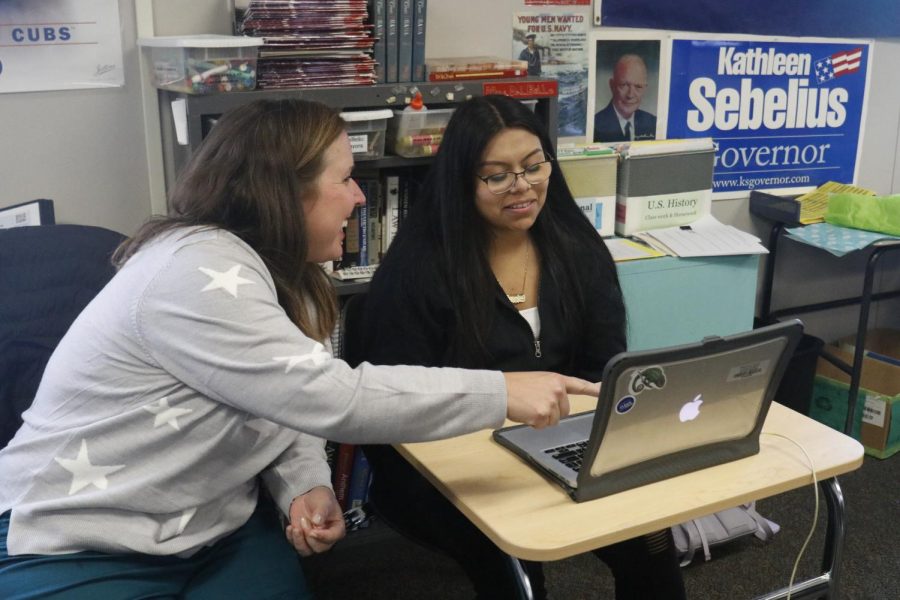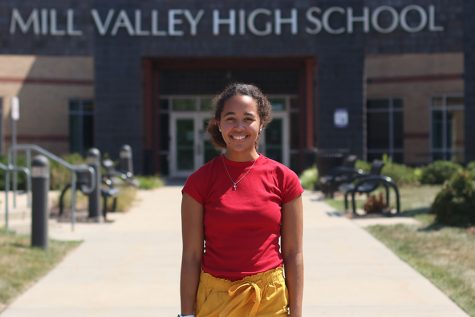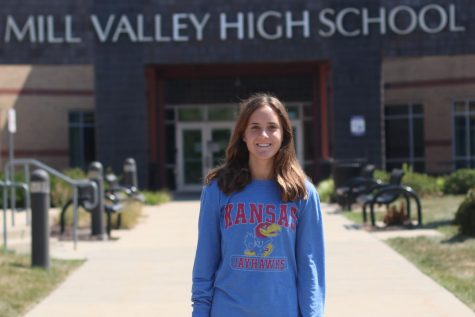District passes new late start schedule
The new schedule, beginning Wednesday Nov. 30, will grant consistent time for teachers to work collaboratively in teams based on discipline and subject area
November 8, 2022
The USD 232 Board of Education approved a schedule allowing weekly morning staff departmental meetings and a subsequent 30-minute late start at their regularly scheduled meeting. The schedule will take effect Wednesday, Nov. 30 and will not delay student arrival time and bus transportation.
For students who arrive at school at regular time on late start days, breakfast will continue to be served in the commons. All students arriving at regular time will be supervised in the commons by staff excluded from the collaborative team time schedule.

The schedule was proposed by a combined group of De Soto and Mill Valley staff and administration. The staff cited meta-analysis from 50,000 individual studies done on the overall effects of collective teacher efficacy on student achievement. The analysis demonstrated that collaborative team time among teachers allows teachers to better support individual students’ academic achievements. Putting the schedule into action will implement the Professional Learning Community, PLC, model allotting required time before school for teachers in the same subject area and discipline to learn and work together to improve student academic growth.
Principal Dr. Gail Holder, who worked in tandem with DHS principal Sam Ruff, played an integral role in creating and endorsing the schedule in hopes that it will elevate the school’s success rate in the next year.
“I am a big proponent and very passionate about education,” Holder said. “I know what it can do for students. I know that the trajectory of a student’s life changes if they do not have a high school diploma. In addition, I really am a big advocate for academic growth and success. I believe very strongly that every student deserves the opportunity, not the right, the opportunity, to grow one grade level each and every year. And, without professionals coming together we can’t discuss how we are going to work with [students].”
Social studies teacher Angie DalBello does not share a plan period with other US history teachers. Prior to the new collaborative time no department had a common plan, which made it difficult to have time to meet and collaborate. The newly created collaborative time will allow her to be able to work with other teachers in her department to develop innovative ideas for improving the school experience for her students.
“When you’re at a school that’s already pretty successful, it takes a lot to nudge it in the direction and take that next step,” DalBello said. “Hopefully, [with the addition of late start days], we’ll start to see those changes.”
Daily collaborative team time will be from 7:30 a.m. to 8:15 a.m. with block classes beginning at 8:20 a.m. and ending at the normal 2:55 p.m. dismissal time. Each regular block will be shortened to 80 minutes from the regular 85 minutes with the exception of fourth block. Fourth block will be shortened to 110 minutes from the regular 115 minutes to accommodate lunch times.
This new collaborative team time will allow for more time for students like junior Nathan Anderson to start their morning, get more sleep and stay more attentive in class.
“I think I’ll really like [this new schedule] because I don’t think I get enough sleep at night on school nights,” Anderson said. “Waking up even 40 minutes later will probably make a huge difference for me. “I won’t be as tired during the day and getting up in the morning will be a lot less stressful.”
For students like freshmen Cat Rivas and Ian Weatherman, who take the bus to school, collaborative team time will give them an extra 30-minute study hall in place of more time to sleep in. For Rivas, this is a downside.
“That’s one of the reasons why I’m not really for it because of the buses,” Rivas said. “It’ll just be a little challenging getting to school when it’s early in the morning [and] when school starts later.”
For Weatherman, arriving at school during the regular time on Wednesdays will give him more time to focus on school work in a quieter focus-based setting.
“I think that it’ll help me get more done,” Weatherman said. “Especially if I forgot to do an assignment the night before maybe or if I was just tired the night before, if I stayed up doing something, it’s going to be nice to know, ‘Oh, I have that [extra-time to finish it].There’s a late start tomorrow, so I can just get it done tomorrow in the commons.’”
Anticipating how the implementation of collaborative team time will affect students and staff, Holder chooses to keep an open mind.
“All I can do is hope that our staff has an opportunity to see the power of collaboration and what it can do for our students,” Holder said. “And then ultimately, I hope that we see a good deal of student achievement and our scores being raised and our kids doing better.”












